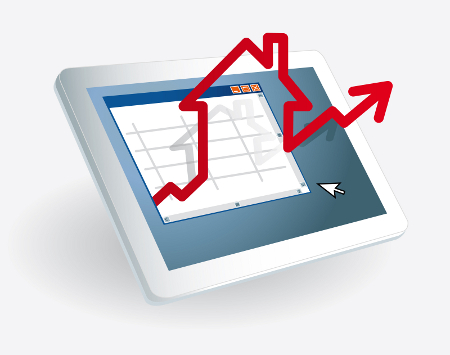You are viewing our site as a Broker, Switch Your View:
Agent | Broker Reset Filters to Default Back to ListReal Estate Marketing Analysis: Where’s the Bottom of the Market?
June 26 2012
 CoreLogic CEO, Anand Nallathambi, addresses this market issue in his "Letter from the CEO" introduction to the latest quarterly MarketPulse Report. In this brief overview of the real estate markets, Anand cuts through all the real estate data and statistics that make up the report and calls the market condition as he sees it. This page and half read is worth your time:
CoreLogic CEO, Anand Nallathambi, addresses this market issue in his "Letter from the CEO" introduction to the latest quarterly MarketPulse Report. In this brief overview of the real estate markets, Anand cuts through all the real estate data and statistics that make up the report and calls the market condition as he sees it. This page and half read is worth your time:
Are we there yet?
That's the question that has confounded the housing market for the last four years. Has the market bottomed? Should I buy now? Or will prices go even lower?
In 2010, price gains were primarily due to demand created by the homebuyer tax credit program. When the program expired, so did the gains, and our monthly Home Price Index (HPI) finished the year in the negative. Over the course of 2011, we saw four months of gains, but again finished down by 4.5 percent overall. This year, as was the case the previous two years, spring brought an upward movement in our HPI. So the question on many peoples' minds is will this year's end result be any different than the recent past?
One indication of where we may be heading is the upward trend in the HPI itself. In March, and again in April, the month-over-month HPI increase was up 1.1 percent and 2.2 percent, respectively. Additionally, our newly introduced Pending HPI, an augmentation of our HPI based on Multiple Listing Service data, indicates house prices rose again from April to May by 2 percent. While this trend is subject to the uncertainty introduced by other macro-economic conditions sush as domestic jobs growth or the ongoing financial struggles of some European countries, I am hopeful that the current level of momentum can be sustained in the coming months.
Another illuminating factor is the available supply of homes for sale. Nationally, inventory levels have trended down to a 6.5 month supply--a reasonably healthy level. Unfortunately, there are also significantly fewer buyers. Historically, current homeowners trading up represent the biggest segment of the purchase market. But with more than 20 percent of homeowners underwater, another 25 percent of all homeowners possessing less than 20 percent equity in their homes, and tightened underwriting requirements, this potential pool of buyers has effectively been eliminated. On the bright side, in some markets, like Phoenix, San Diego, and even Las Vegas, there is more demand than inventory, which of course is pushing prices up.
Current industry forecasts for mortgage originations are trending up toward $1.3 trillion as we approach the halfway point of 2012, fueled by strong refinancing activity. But at a time when it appears our leaner, smaller industry may again be facing capacity challenges and with interest rates at all-time lows, how sustainable are volumes? Forecasting mortgage origination volume and purchase-to-refinance share used to be relatively straightforward. Purchase volume could be calculated using pending sales figures and modeled for refinance volume based on interest rate trends. Today, refinances are running at more than 70 percent of the market with 60- to 90-day timelines for closings. In addition, there are structural shifts, such as an increased share of cash buyers, the high share of policy-stimulated high LTV refinance activity, and the increased share of low down-payment FHA and VA lending. In addition, minimum standards for credit are higher and debt-to-income ratios lower than in the past, squeezing credit eligibility for consumers who are "in-the-money" on rates. Those who are "in-the-money," with good credit and positive equity, have already financed in many cases, sometimes more than once in the past two years.
While a broad spectrum of government lending channel support is providing some additional momentum, negative equity (and damaged credit from the Great Recession) is keeping a significant number of "in-the-money" prospects out of the traditional refi market. And even if those prospects could refinance, that can only help so much. Though refinances do stimulate our industry, improve household balance sheets and lower default risks for the GSEs, they don't contribute to the long-term recovery of the real estate market.
Alright, enough walking the tightrope by pointing to more data and statistics without giving a straight yes or no answer to the question, "Are we there yet?" The mortgage industry has done a great job of rising to the challenges in years past. There is a definite sense of solid fundamentals laying the groundwork for sustainable improvements. How robust the improvements will be is the big question.
There are green shoots that indicate the market has turned for good. HPI and home sales are up. Inventory is trending down. Of course, for every green shoot there is a caveat--the credit markets remain tight, the purchase-to-refinance market ratio is upside down and much of the positive news is still regional in nature. Ultimately only time, jobs growth and buyers born from the mending of consumer credit will return the housing sector of the economy to a clean bill of health.
Sincerely,
Anand Nallathambi
President and Chief Executive Officer
Click here to read the MarketPulse report.
To view the original article, visit the CoreLogic Broker Cafe.









